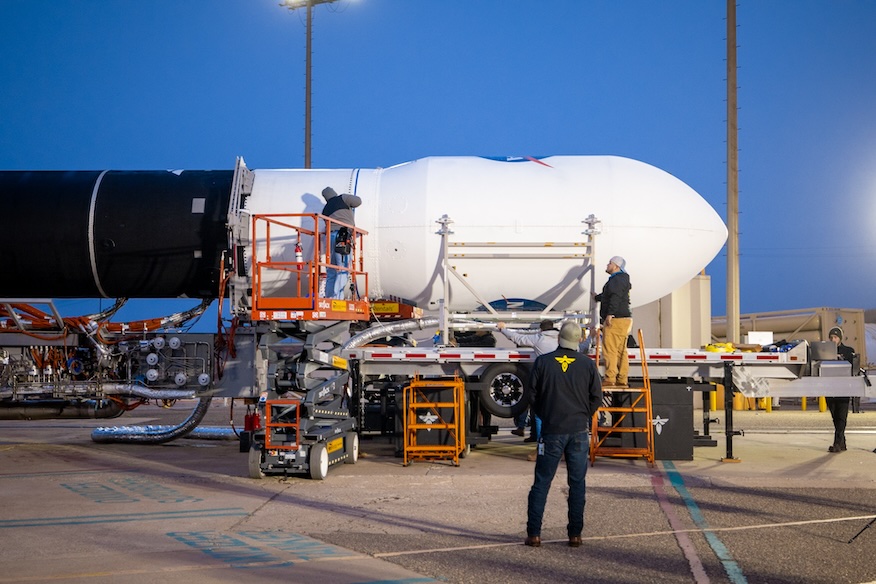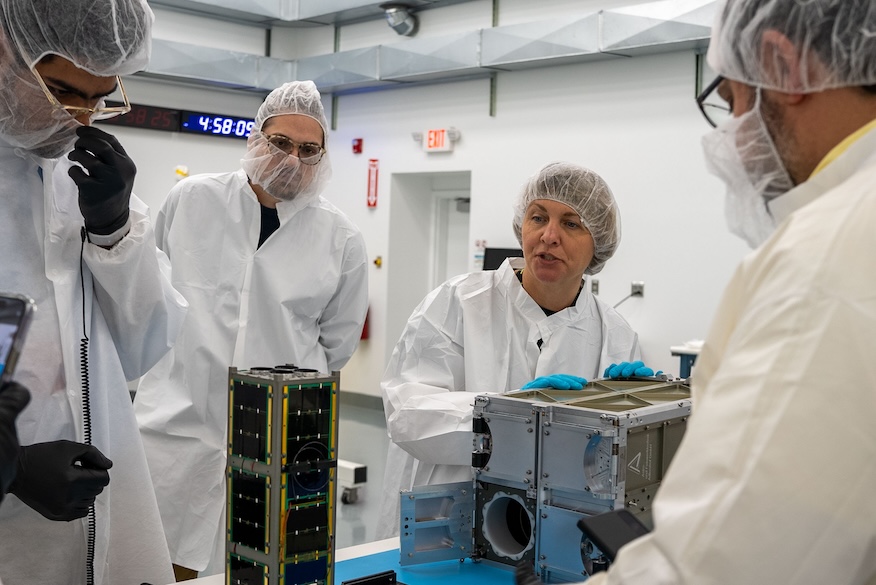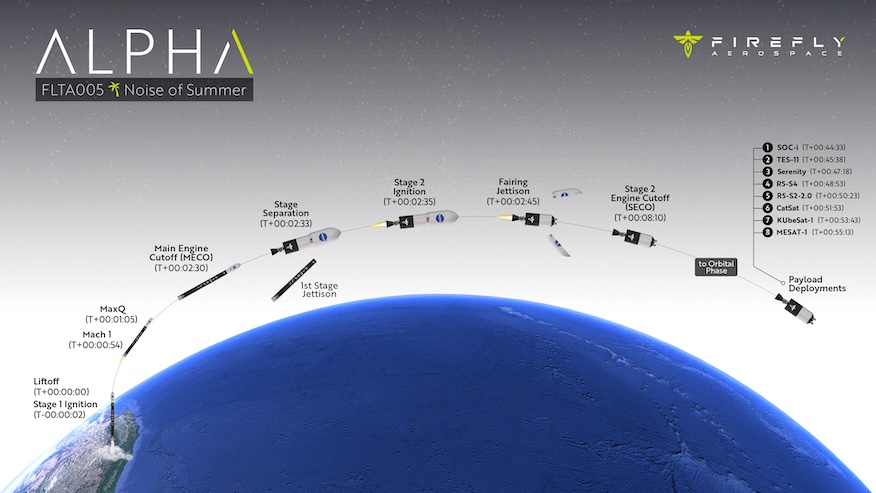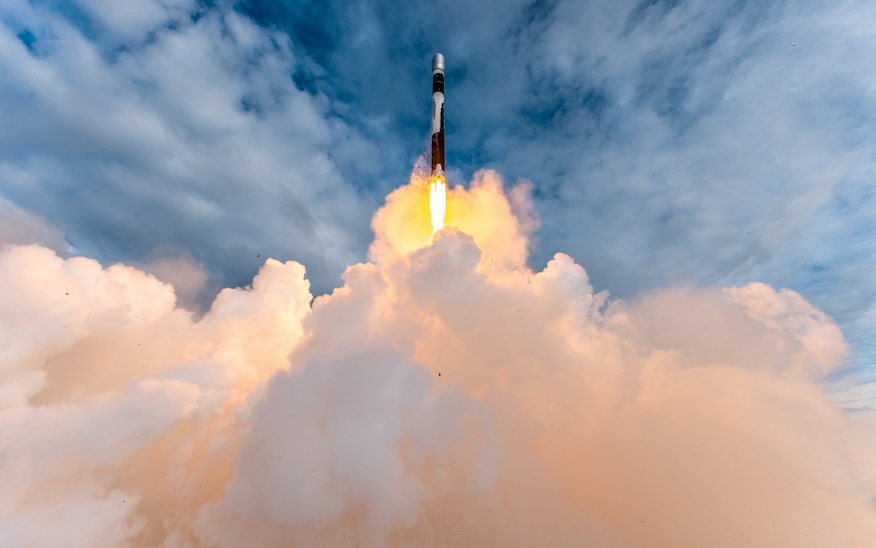
Update 12:30 a.m. EDT: Firefly has ended the “Noise of Summer” mission and is evaluating its next launch opportunity.
A last-minute ground systems glitch forced Firefly Aerospace to ground as it prepared to launch its fifth Alpha rocket on its first mission with NASA as a customer. When it launches, the 96.7-foot-tall (29.48-meter) two-stage rocket will send eight CubeSats from several NASA universities and centers into sun-synchronous Earth orbit Monday night.
Liftoff from Space Launch Complex 2 (SLC-2) at Vandenberg Air Force Station is now scheduled for no earlier than Tuesday, July 2, at 9:03 p.m. PDT (12:03 a.m. EDT, 04:03 UTC).
The mission countdown reached T-8 seconds when the first abort call was received. It was described as a “ground support problem.”
The launch teams decided to recycle at T-19 minutes and targeted the end of the 30-minute launch window at 9:33 p.m. PDT (12:33 a.m. EDT, 4:33 a.m. UTC).
However, once the countdown reached approximately T-10 minutes and 12 seconds, a second abort call was made and Firefly ultimately decided to cancel the launch attempt.
“The team has identified the solution and is working quickly to meet our next launch window on July 2nd,” Firefly wrote on social media.
The Alpha FLTA005 mission, also nicknamed “Noise of Summer,” is part of the $9.8 million Venture-Class Launch Services Demo 2 (VCLS Demo 2) contract awarded by NASA in December 2020. It, along with Astra Space Inc. ($3.9 million) and Relativity Space Inc. ($3 million), were awarded firm-fixed-price contracts to connect small satellites to newer rockets.
The idea, according to NASA, is that these “small satellites can tolerate a higher level of risk than larger missions and will demonstrate – and help mitigate – the risks associated with using new launch vehicles to enable access to space for future small spacecraft and missions.” The contract is funded in part by the Earth Sciences Division of NASA’s Science Mission Directorate, in partnership with NASA’s Launch Services Program (LSP).
Astra launched its VCLS Demo 2 mission in February 2022, which ended in failure shortly after stage separation. Meanwhile, Relativity ended its Terran 1 rocket program before launching its VCLS Demo 2 mission. It is likely to push for that mission to be carried out with its future Terran R rocket, which is scheduled to debut in 2026.
In May, NASA classified Firefly’s Alpha rocket as a “Category 1” on a three-tiered risk tolerance barometer. It defines that category as “high risk – new, common rocket configuration with little or no demonstrated flight history.”

NASA is calling the flight the Educational Launch of Nanosatellites 43 (ELaNa 43) mission. The eight CubeSats on board are part of the agency’s CubeSate Launch Initiative (CSLI), which it describes as “an ongoing partnership between the agency, educational institutions and nonprofit organizations, paving the way for educational small satellite missions in space.”
Alpha FLTA005 carries the following payloads, which will be deployed into a sun-synchronous Earth orbit:
- CatSat – University of Arizona, Tucson
- KUbeSat-1 – University of Kansas, Lawrence
- MESAT-1 – University of Maine, Orono
- R5-S4, R5-S2-2.0 – NASA Johnson Space Center
- Serenity – Teachers in Space
- SOC-i – University of Washington, Seattle
- TechEdSat-11 (TES-11) – NASA Ames Research Center, Silicon Valley, California
Their roles range from CatSat’s demonstration of a deployable antenna for high-speed communications to MESAT-1’s study of temperatures to “determine phytoplankton concentrations in water bodies to help predict algal blooms,” to the R5-S4 and R5-S2-2.0 satellites, which are studying how to build lighter CubeSats.
“In the near term, R5 hopes to demonstrate new processes that will enable faster and less costly development of high-performance CubeSats,” Sam Pedrotty, R5 project manager at NASA’s Johnson Space Center in Houston, said in a statement. “The cost and schedule improvements will allow R5 to provide higher-risk transport options for low-technology-readiness payloads so that more satellites can be demonstrated in orbit.”

Alpha resumes flight
The last time an Alpha rocket was launched was on December 22, 2023, during the “Fly the Lightning” mission for customer Lockheed Martin. That mission ended in partial failure when a problem with the upper stage prevented the rocket from placing the satellite into its intended orbit.
In February, the company submitted its incident investigation report to the Federal Aviation Administration (FAA), which included both an incident investigation team and an independent review team to determine the root cause of the problem. Firefly determined that it was an error in the guidance, navigation, and control (GNC) software that was not properly communicating with the upper stage’s reaction control system (RCS) thrusters.
“We are proud of the combined team’s ability to work together to achieve this positive outcome,” Firefly Aerospace CEO Bill Weber said in a statement. “The important long-term outcome is the rapid and complete maturation of Alpha into the reliable one-ton class rocket that the market demands, something Firefly has been dedicated to and is delivering.”

Lockheed Martin was undeterred by the partial mishap, as evidenced by its recent investment in Firefly’s Alpha rockets as its ticket to space. In early June, the company signed a multiple launch contract with Firefly for 15 confirmed launches and up to 10 additional missions through 2029. The first launch of Alpha FLTA006 is scheduled for later this year from Vandenberg.
“Our customers have told us they need rapid advancement in new mission capabilities,” said Bob Behnken, director of Ignite Technology Acceleration at Lockheed Martin Space, in a statement. “This agreement with Firefly further diversifies our access to space, allowing us to continue to rapidly demonstrate in-flight the cutting-edge technology we are developing for them, as well as continue our exploration of tactical and responsive space solutions.”
At a ribbon-cutting ceremony marking major expansions to its manufacturing facility in Cedar Park, Texas, in late February, Weber told the crowd that Alpha FLTA005 is the first of a handful of missions this year.
“We’re going to launch the Alpha rocket four times this year with real missions that matter in the world that we operate in. These are not test payloads, these are real contracts with real customers, commercial and government,” Weber said. “And then we’ll come back next year and do it six to eight more times, and then we’ll keep going.”
During the presentation, Weber said that Alpha FLTA007 would be the first launch of their Elytra orbital vehicle “in the September/early October timeframe.” The payloads that will be attached to this spacecraft have not been announced.
Introducing Elytra: Our family of highly mobile and scalable orbital vehicles. Formerly known as the Space Utility Vehicle, Elytra delivers more robust on-orbit solutions including mobility, accommodation, delivery and servicing in cislunar space and beyond. pic.twitter.com/bjJw969yBB
— Firefly Aerospace (@Firefly_Space) August 8, 2023
Firefly also announced that it has secured launch space in Virginia and Sweden in the past month. It said that Pad-0A at the Mid-Atlantic Regional Spaceport (MARS) on Wallops Island, Virginia, will be ready to host both the Alpha rocket and the Medium Launch Vehicle (MLV) (in partnership with Northrop Grumman) in early 2025. It took over the space formerly used by Northrop Grumman’s Antares 220+ rocket.
A partnership with the Swedish Space Company (SSC) will enable the satellite to be launched from the new spaceport at the Estrange Space Centre in Sweden from 2026.
“We are delighted to announce this historic collaboration that will have a significant impact on the global launch market, particularly in Europe and the United States,” SSC CEO Charlotta Sund said in a statement. “By closing the current gap between orbital launch sites in Europe, this collaboration strengthens the transatlantic link between Sweden and the United States while providing unique space capabilities for Swedish NATO members. We look forward to launching this competitive and proven launch service at Esrange in northern Europe.”
Firefly signed an agreement in 2019 to use the SLC-20 at Cape Canaveral Space Force Station and announced plans to establish an Alpha manufacturing facility at Exploration Park, near the gates of NASA’s Kennedy Space Center.
During a tour of the facility in February 2024, Adam Oakes, Firefly’s vice president of launch vehicles, said being able to launch from Wallops would be a major asset, particularly for the launch of the MLV, which will take over from the Cygnus spacecraft to the International Space Station.
“I think the government is looking to have resilient access to space and Florida is just one hurricane away from delaying its launch,” Oakes said. “So I would say flying from Wallops is a unique differentiator for this vehicle. It’s very cost competitive with the current Falcon 9 system and Dragon and, in fact, it carries more cargo than the Falcon 9 cargo system can carry. So we’re very excited about that.”